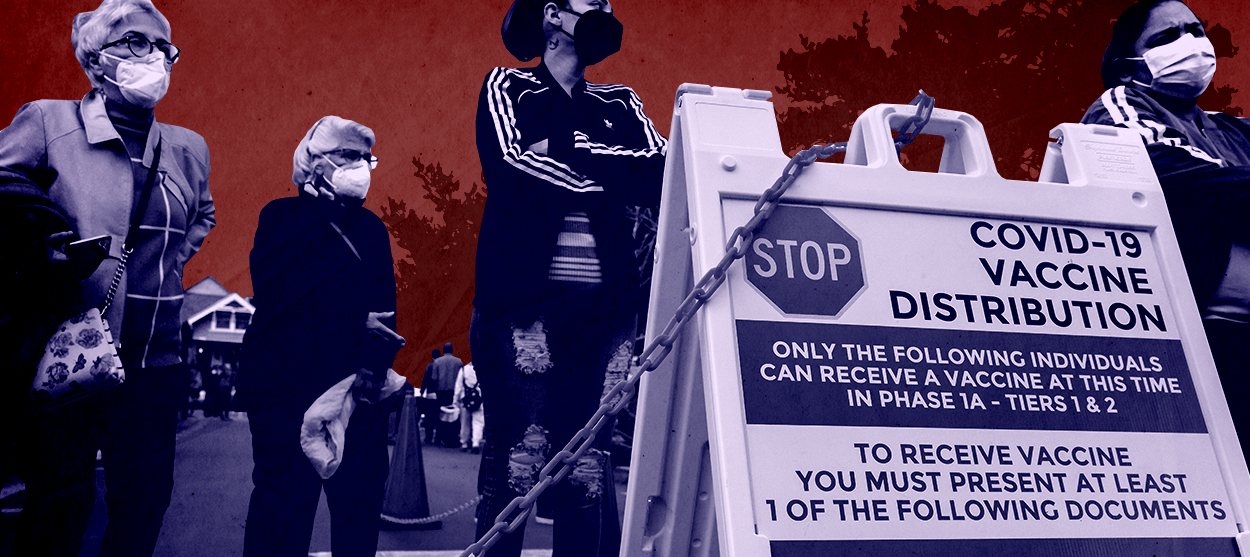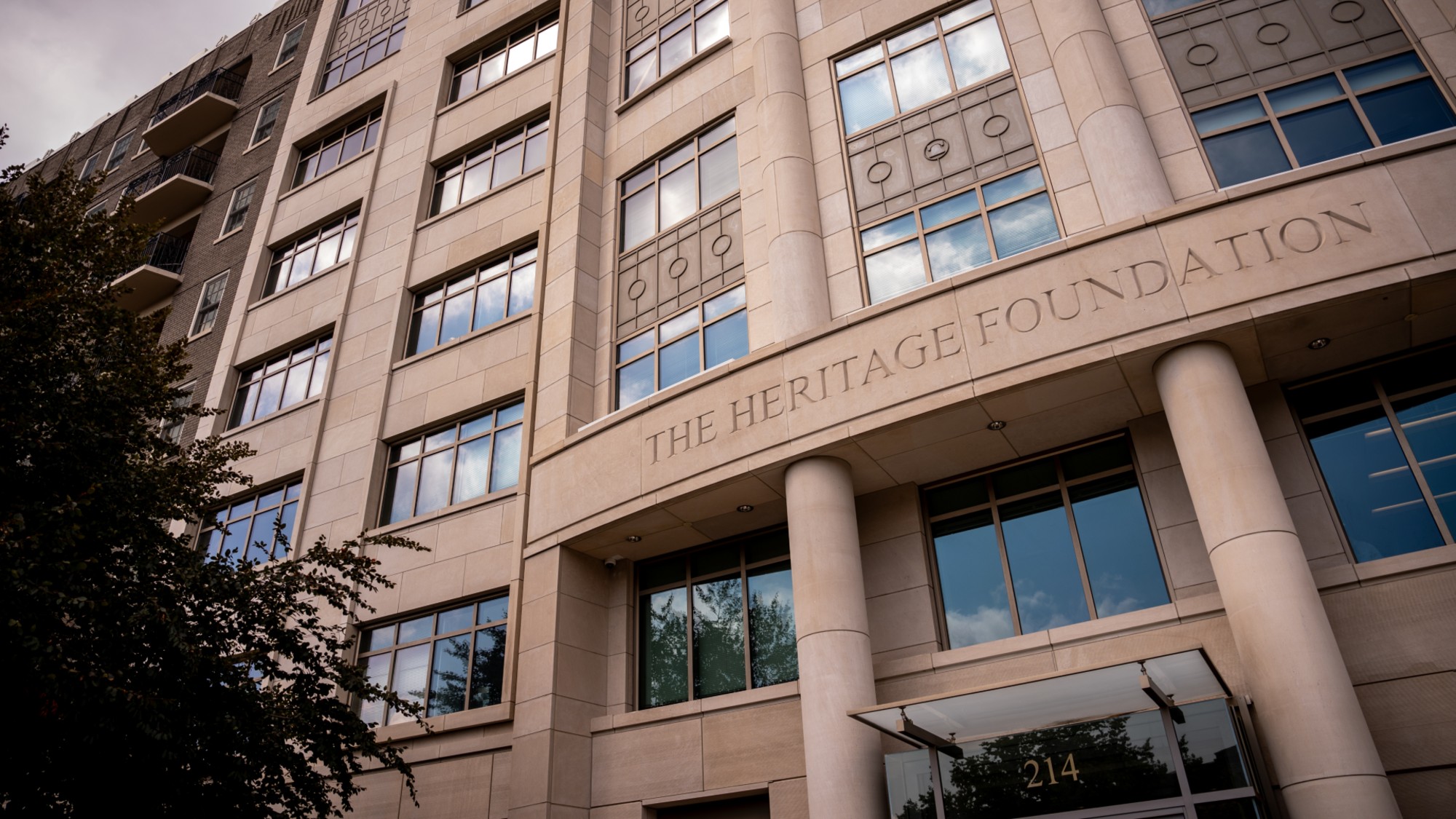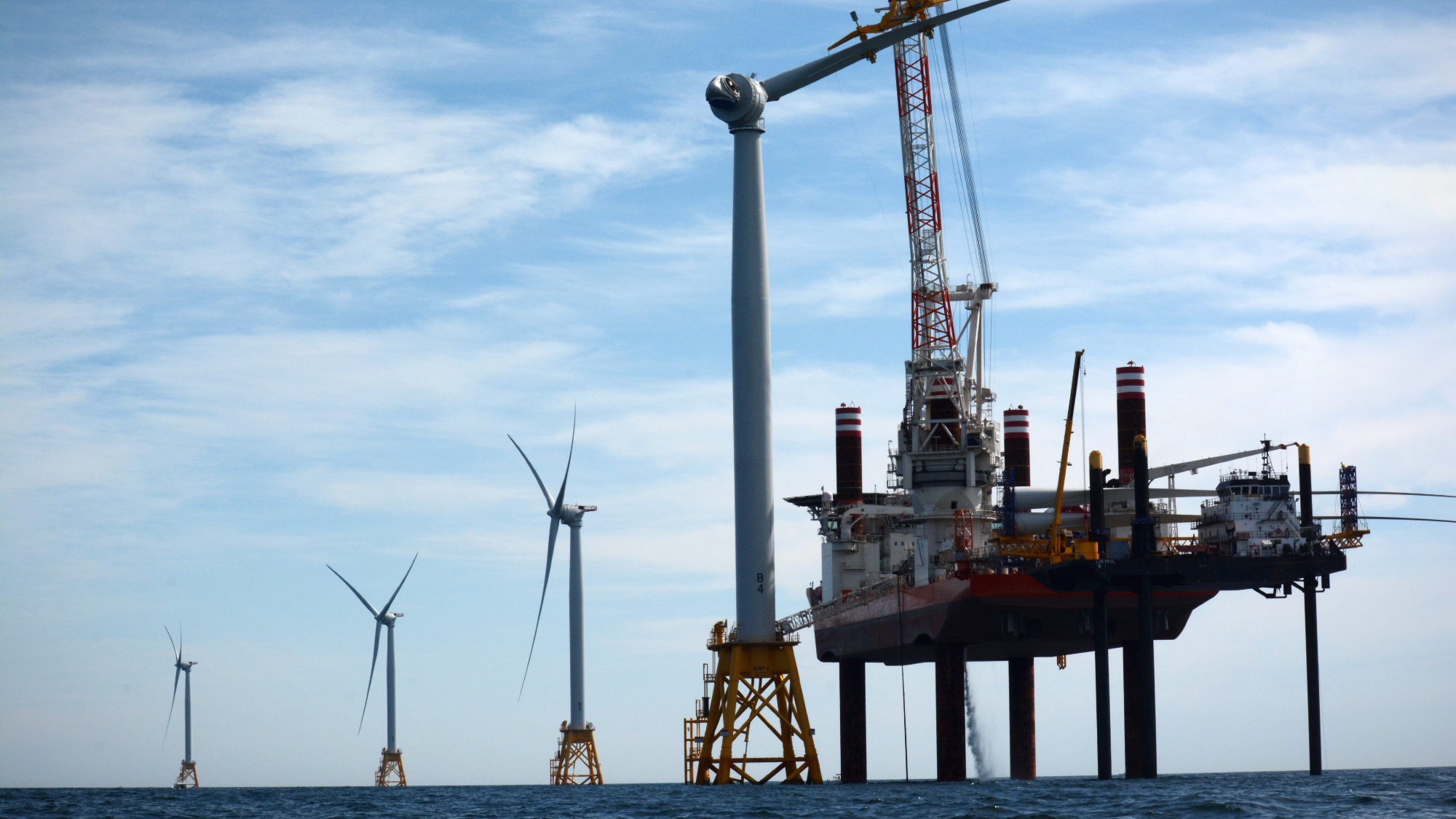America's maddeningly inept vaccine rollout
It is excruciatingly difficult to get a vaccine in many states. We must do better.


It was a little over a year ago — the weekend of March 7-8, 2020 — that I last traveled outside of my house for work. A conference took me to Indianapolis, and everyone in attendance understood that this gathering could well be the last of its kind for a while. No one was wearing a mask yet, but we awkwardly bumped elbows all weekend and remained abnormally distant from each other as we schmoozed over meals and drinks.
When I arrived home early in the afternoon on Sunday, I told my wife that I thought we were just a few days away from something big happening. Less than a week later, our children were on an early spring break that would never fully end, with remote and then hybrid instruction becoming the new normal. Masks had started to become ubiquitous. Businesses were being shut down, leaving only grocery stores and gas stations fully operational. This initial lockdown would end a few months later, but it would be followed by new surges of the COVID-19 virus and the reimposition of restrictions.
A year later, half a million Americans are dead, with the number continuing to rise, and our lives are still disrupted — with the brutal winter that has slammed much of the country only adding to our exhaustion and anxiety about when, precisely, life might return to something like normal, with normality defined as the rhythms and risk calculations that prevailed before the pandemic first settled in.
The Week
Escape your echo chamber. Get the facts behind the news, plus analysis from multiple perspectives.

Sign up for The Week's Free Newsletters
From our morning news briefing to a weekly Good News Newsletter, get the best of The Week delivered directly to your inbox.
From our morning news briefing to a weekly Good News Newsletter, get the best of The Week delivered directly to your inbox.
You'd think that the remarkable speed with which a series of pharmaceutical companies developed highly effective vaccines — an incredible human achievement — would be a much-needed source of hope. And indeed, it was exactly that for me from November through January. We had the proverbial light at the end of the tunnel! All that needed to happen was for these drug companies to mass produce enough vaccine for everyone — and for our government to get it distributed and put in people's arms. Surely this would be made the highest possible priority, with nothing less than our economies, our psyches, and our children's educations and social well-being hanging in the balance. Right?
Apparently not. The astonishing fact is that we don't appear to be in much of a hurry. The vaccines have been available since late last year. The country has currently administered first doses to 13 percent of the population. At the current vaccination rate — a rate that, incidentally, dropped last week to 1.4 million doses from 1.7 million the week before — the country will only be half vaccinated on August 1 and won't reach the 90 percent threshold until Jan. 22, 2022, nearly another year from now. (And that assumes, of course, that nine out of 10 Americans could be persuaded to get the shot, rather than the mere 49 percent who say they are willing to do so.) I suspect that the dawning realization of just how slowly the roll-out is going is what motivated Anthony Fauci to suggest on Sunday that Americans may still need to wear masks outside their homes into 2022.
How can this be? Why does it feel like our public institutions are treating this like a mildly important initiative instead of a matter of decisive — nay, critical — importance to the country and its citizens? Or might the problem be something even more troubling — namely, that our public institutions are treating this with grave seriousness and yet are incapable of doing any better?
I don't know for sure. All I do know is that my wife is in the 1a vaccine group — those who should be near the front of the line — and getting an appointment where we live (in Pennsylvania) is absurdly, maddeningly complex and frustrating. She placed her name on a list with our county weeks ago. While we wait to hear something from that black box, we've turned elsewhere, which means to pharmacy chains.
A free daily email with the biggest news stories of the day – and the best features from TheWeek.com
Rite Aid, Walgreens, CVS — it's like some farcical enactment of federalism, with the most local level of "government" actually a retail outlet of a drug store conglomerate. If you want the vaccine, you need to sign up for an account at the website for one of these chains. Once you've worked your way through several screens designed to weed out those who aren't 1a, you click on "Make an Appointment," only to receive the automatic message, "Apologies, due to high demand, there are currently no appointment times available." Neighbors on Next Door tell us that we might have better luck if we try at exactly midnight on Sunday night, when a limited number of additional appointments at select stores sometimes become available.
That's it? That's how the United States of America is ensuring that its population of 330 million people receives the vaccine that will bring an end to a pandemic that has thus far killed 500,000 people, slowed the economy to a crawl, and spread psychological suffering throughout the country?
I'd be perfectly happy to blame the Commonwealth of Pennsylvania for this inept performance. Yet Pennsylvania has vaccinated 13 percent of its population, which places it exactly at the national average. That means a lot of other states — including New York, Maryland, and much of the deep south — are doing worse, though usually by just a percentage point or two. The variation across the country simply isn't very great, with our mediocre performance pretty evenly distributed.
But how mediocre are we really? If we compare ourselves to other countries, the results are mixed. The United Kingdom is doing a little better than we are. But the European Union is doing far, far worse, with vaccinations proceeding last week at roughly one fifth the U.S. rate. Only Israel truly puts us to shame. As of this weekend, the country has fully vaccinated 32 percent of its population. (The U.S. is currently at 5.7 percent for the administration of two vaccine doses.)
This raises a distressing possibility. The United States and the European Union are both very large, and they are both highly differentiated, with multiple levels of governing authorities. The EU's member states have national as well as regional governments within states, and the separate layer of governance and bureaucracy at the EU level sits atop that. The U.S., meanwhile, has the federal government as well as state and local governments. Both political entities sprawl across continents. Could it be that orchestrating something as complicated and far-reaching as a universal vaccine distribution plan in anything like a rapid and efficient manner is simply beyond the powers of these sclerotic, lumbering, mega-states? Might it simply outstrip their capacity?
Israel, by contrast, is small (just nine million people), with its central state capable of much deeper social penetration than is possible in a country of 330 million or a confederation of nearly 450 million. Israel is also much younger (its median age is 30.5) than the U.S. (38.1) or Europe (42.5), and most of its citizens participate in mandatory military service. This may contribute to making Israel a nimble country capable of mobilizing itself for public purposes in a way that larger, older, flabbier, more dysfunctional societies simply can't.
Still, I'd like to think the U.S. could do better than it is. The state of West Virginia, for example, has administered the first dose of the vaccine to 16.2 percent of its population, which is nearly 25 percent above the national average. The state has accomplished this, in part, by using the National Guard to help out with distribution efforts. Why isn't President Biden doing something similar on a national basis?
The sooner the vaccines get disseminated and administered, the sooner we can liberate ourselves from the pandemic, returning at last to school, work, travel — life. It should be nothing less than our national mission to get it done as quickly as possible.
Damon Linker is a senior correspondent at TheWeek.com. He is also a former contributing editor at The New Republic and the author of The Theocons and The Religious Test.
-
 Has Zohran Mamdani shown the Democrats how to win again?
Has Zohran Mamdani shown the Democrats how to win again?Today’s Big Question New York City mayoral election touted as victory for left-wing populists but moderate centrist wins elsewhere present more complex path for Democratic Party
-
 Millions turn out for anti-Trump ‘No Kings’ rallies
Millions turn out for anti-Trump ‘No Kings’ ralliesSpeed Read An estimated 7 million people participated, 2 million more than at the first ‘No Kings’ protest in June
-
 Ghislaine Maxwell: angling for a Trump pardon
Ghislaine Maxwell: angling for a Trump pardonTalking Point Convicted sex trafficker's testimony could shed new light on president's links to Jeffrey Epstein
-
 The last words and final moments of 40 presidents
The last words and final moments of 40 presidentsThe Explainer Some are eloquent quotes worthy of the holders of the highest office in the nation, and others... aren't
-
 The JFK files: the truth at last?
The JFK files: the truth at last?In The Spotlight More than 64,000 previously classified documents relating the 1963 assassination of John F. Kennedy have been released by the Trump administration
-
 'Seriously, not literally': how should the world take Donald Trump?
'Seriously, not literally': how should the world take Donald Trump?Today's big question White House rhetoric and reality look likely to become increasingly blurred
-
 Will Trump's 'madman' strategy pay off?
Will Trump's 'madman' strategy pay off?Today's Big Question Incoming US president likes to seem unpredictable but, this time round, world leaders could be wise to his playbook
-
 Democrats vs. Republicans: who do the billionaires back?
Democrats vs. Republicans: who do the billionaires back?The Explainer Younger tech titans join 'boys' club throwing money and support' behind President Trump, while older plutocrats quietly rebuke new administration



